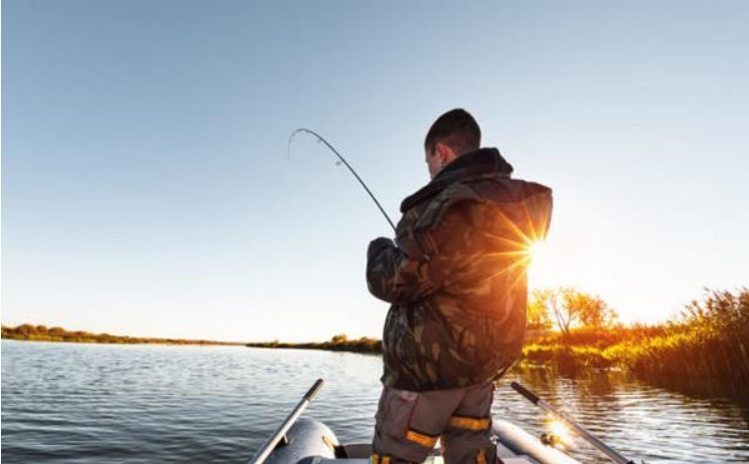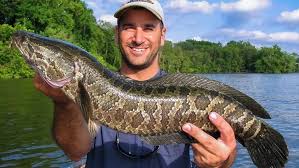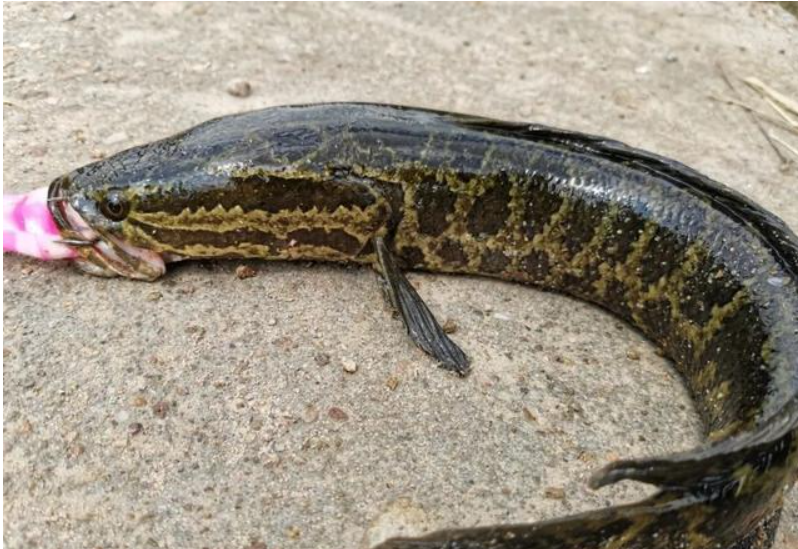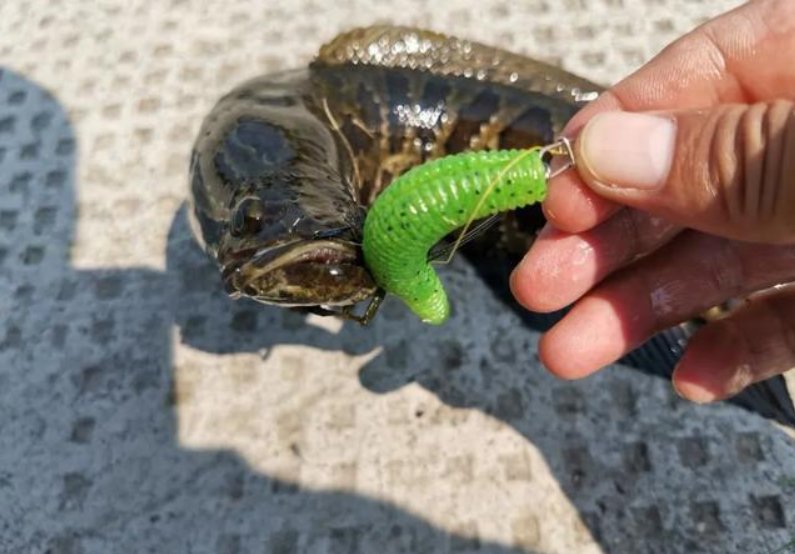Is spring a good time for lure fishing targeting black snakehead? In most regions, spring, especially the current period, is not ideal due to unstable and generally low temperatures. The activity level of black snakehead is poor during this season—they rarely emerge, and even when they do, they might not feed or be difficult to hook.

In northern areas, catching black snakehead with lures in March or April can be challenging. However, it is possible in some southern regions, where anglers even practice frog fishing during winter. Spring is not the peak season for black snakehead, so why discuss it? Frankly, by June, July, or August, when temperatures rise and fish activity increases, success is still not guaranteed. Similarly, September to November is considered the prime season, but with high angler competition, results may vary. In spring, many anglers avoid targeting black snakehead due to perceived unfavorable conditions, opting instead for float fishing or long-rod techniques for species like carp or Crucian carp. Lure enthusiasts might focus on other fish, such as mandarin fish, reducing pressure on black snakehead habitats.
These are some advantages of spring black snakehead fishing, though the difficulty remains high. Be prepared for potential unsuccessful trips. This article aims to guide beginners in frog fishing, providing references to avoid aimless casting.

For spring black snakehead lure fishing, start by considering weather and timing. Choosing the right time is crucial, especially in early spring when weather is unpredictable and temperatures are low. Incorrect timing may result in no sightings of black snakehead. Ideal conditions include sunny, warm days with minimal wind—preferably below level three. Strong winds without sheltered spots significantly increase the chance of failure. Additionally, avoid relying solely on daily weather forecasts. Assess conditions over several days, including the preceding and following days. For black snakehead, consecutive sunny days are best. If a cold, windy, or rainy day with temperatures around 7-8°C is followed by a warm, sunny day, fishing is not recommended as fish may not have adjusted.
Once weather is selected, decide between morning or afternoon fishing. Unlike summer or autumn, spring fishing does not require an early start. On sunny days, beginning around 9 AM is feasible since the water surface needs time to warm. Arriving at 7-8 AM may waste effort as fish remain in deeper waters. Generally, fishing from 9 AM to 4 PM is effective, with peak activity between 11 AM and 2 PM when temperatures are highest. During this time, black snakehead move to shallow waters or shorelines to bask and forage.

Regarding spot selection, black snakehead prefer areas with abundant cover, such as aquatic vegetation. In spring, due to cooler water, they likely stay in weedy zones. Focus on shallow areas with extensive vegetation. While they may occasionally appear in open waters or near shorelines, these spots are less productive due to the fish’s caution. Even if spotted, casting lures directly may not yield results.
In summer, dense vegetation or heavy cover areas are preferred as they provide shade and cooler temperatures. However, spring behavior differs—fish seek sunlight to warm up. Overly thick vegetation can hinder basking, so target sparser areas that still offer hiding spots, preferably with large weed beds. Black snakehead are territorial; small patches may host only one fish, while larger areas increase encounter chances.
Beyond selecting large, moderately sparse vegetation and shallow waters, prioritize small water bodies over vast rivers or reservoirs. Larger, deeper waters warm slowly, making them less productive than small, shallow ponds. If only reservoirs are available, focus on tail ends or vegetated bays.
For specific techniques in small waters, stand at a distance and cast the lure onto the shore, then retrieve it to mimic natural entry into the water. Direct casting risks startling fish with loud splashes or inaccurate placement. While lure fishing involves active searching, avoid random casts. Instead, methodically target chosen areas with multiple casts. If unsure of fish locations, start from the edges (left to right or vice versa) and search parallelly or from near to far.
In thick vegetation, pay attention to gaps or “grass holes” where black snakehead may bask. Cast slightly beyond these spots, slow the retrieval, and gently twitch the rod tip to make the lure quiver in place. Pause intermittently—twitch twice, wait, then repeat. If no bite occurs after two or three attempts over 10-15 seconds, retrieve the lure. Prolonged停留 may arouse suspicion. Re-cast to the same spot multiple times, as initial refusal might lead to later strikes.

This approach targets high-probability spots like grass holes. For broader weedy areas without specific points, focus on transitions between dense and sparse vegetation or shorelines. When spots are uncertain, multiple casts in one area can attract distant fish. Always retrieve lures slowly, unlike the faster retrieves used in warmer seasons.
Lure selection and application are integral to techniques. For black snakehead or frog fishing, the frog lure is a popular and visual choice, but it has drawbacks. Its loud entry splash can scare fish if casting accuracy is poor. Additionally, black snakehead may exhibit light bites in spring due to lower activity—sometimes sucking in the lure without dramatic surface strikes. This makes hooksets challenging with frog lures.
Thus, do not rely exclusively on frog lures in spring. Include soft plastic lures, and in open waters, try spinners, minnows, or poppers. For example, in a reservoir, start at the tail end in sunny, shallow, vegetated areas. Begin with a small frog lure for broad coverage. If no bites occur, switch to soft plastics for deeper zones. If still unsuccessful, use spinners or minnows in open waters near vegetation, targeting mid to lower layers—upper layers are less productive as fish would likely be in weedy areas if active. Note that stiff frog fishing rods are unsuitable for lighter lures like minnows or poppers; use softer rods for these. In obstacle-free waters with smaller fish, specialized frog rods are unnecessary.
Finally, successful lure fishing for black snakehead depends on resource availability. If waters lack sufficient fish, efforts may be futile. Large, open areas without extensive vegetation make spot identification difficult, as black snakehead are wary in open waters and easily spooked. Ensure adequate resources before investing in gear or techniques. Avoid impulsive purchases based on others’ success alone.